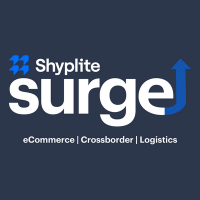
Shyplite
View Brand PublisherShyplite Surge: Here are the key highlights from Shyplite’s biggest virtual event
India has made enormous strides on the e-commerce front over the past decade, thanks to the deep penetration of the internet and a robust online infrastructure. But the ecosystem, while lucrative, also needs to be optimised by businesses with smarter strategies and future-ready plans. And that’s what Shyplite Surge, Shyplite’s first-ever virtual summit, in association with YourStory, brought to the table - a plan to enable stronger, better and smoother business operations worldwide.
Held from August 19-21, 2021, the event brought in over 25 leaders and ecosystem stakeholders to mine insights on the future of the D2C e-commerce industry. The summit was dedicated to understanding three main business verticals – e-commerce, cross-border and logistics, with an aim to answer questions and simplify the operations aspect for entrepreneurs and their partners. Over the three days, Shyplite Surge covered over seven hours of sessions and answered a minimum of 100 audience questions, before its grand finale on August 21. Since then, 90 percent of attendees have said they found the sessions truly informative and insightful.
Consumer experience and user interface remain essential
One of the primary challenges for businesses the pandemic posed was to maintain continuity for a seamless consumer experience. As a generation of new entrepreneurs and customers increasingly explored the e-commerce industry, it became essential for businesses to ensure a personalised customer experience. This is exactly what logistics partners have been trying to deliver, not just for the benefit of businesses but also for shippers.
E-commerce is all about the customer today and brands need to keep them engaged. After dispatch, continuous engagement with customers is essential as customers often forget they even placed an order. Chances of that happening is due to the brand not keeping them updated through emails or messages. Brand visibility is very important. From placing an order to the final delivery, third party tools ensure customers don’t forget the brand, thereby enabling a fruitful customer-brand relationship.
Supply and communications as per the growing user base
The lockdown, which made most metro consumers return to their hometown, significantly affected the consumption patterns. A major challenge for sellers becomes the pincode reach and manpower restraints. A solution for this would be to team up with supply chains with more carrier partners and to keep introducing speed and time-specific services to bring the product to the customer at the earliest.
This change in the shopping patterns also puts emphasis on a brand’s communication and content, which needs to be catered to this growing section of customers. A segment that has actually kept the changing demographic in mind is the automobile segment who have made dealerships more accessible, be it online or offline. Earlier sellers could divide markets more easily, but now the lines are blurred and communication needs to encompass each category.
The world is one big market and sellers need to keep up
The Indian e-commerce ecosystem is extending its reach beyond the borders. Abhijit Kamra, Director, Global Trade at Amazon pointed out that exports hold immense opportunity for growth. "A lot of compliances are associated with exports. So it has been, to a degree, a complex channel. Though the number of people who participated in the business has been small, they are the ones who have benefited greatly," he said.
Nisschal Jaain, Founder and Managing Partner at Shyplite, pointed out that India witnessed $95 billion worth of exports in the first quarter. As more people are opting to expand globally, it becomes important to know the steps before taking the leap. According to Navin Mistry, Director at PayPal, sellers who are looking to export need to know their buyers, who are classified as retail buyers and business buyers. While the business buyer is usually aware of the processes, it is essential to know the steps while opting for cross-border trade. One way would be to go to a respective country’s official website and understand their rules. And the other is to go via Indian trade borders. One of the easiest ways would be to reach out to partners who have knowledge of cross-border trade.
Minimising losses in returns with smart solutions
When it comes to COD (Cash on Delivery) returns, losses are more frequent for the merchant than prepaid. To minimise the losses, industry leaders advised sellers to verify all COD orders. Shyplite has launched a COD verification process where customers get a call to confirm their order.
“We advise all merchants to invest in the branding of their stores so that there’s more trust and customers don’t mind shelling out money before ordering, as prepaid orders guarantee delivery. Another important factor is using the fastest mode of fulfillment possible for COD orders and minimising returns time. And finally, sellers must build some percentage of returns in the cost structure,” said Sugam Jain, Founder and CEO, at Shyplite.
Echoing similar sentiments, Navin Joshua, Co-founder and Director, Greenhonchos, added that businesses which have a physical as well as digital presence could have points of returns, where a customer can walk in to return their order. Quickly dispatching orders and localising the inventory are also some steps to reduce expenditure.
The panel agreed that a comprehensive returns procedure helps in retaining customer loyalty and building brand reliability. Unicommerce too tries to reduce losses through their advanced warehouse management system, where each item that gets dispatched goes through a stringent scanning process to avoid mistakes.
Sunil Kumar, Manager at Unicommerce, advises brands to shorten the delivery time with a stricter returns inspection. “Brands can incentivise customers who use prepaid over those who use COD,” he said.
New entrepreneurs should start with the bare minimum
The fear of starting a new venture can be daunting. Arman Sood, Founder at Sleepy Owl, believes that one must take the leap because along the way, entrepreneurs would end up getting the answers they looked for. Shyplite’s Sugam advised new entrepreneurs to start with the bare minimum, as things don’t always work as per the plan. A new business comes with its own share of ups and downs, and entrepreneurs should be ready for it.
For Gatik Bhandari, Co-founder at The Burnt Soul, packaging and marketing is an important part of a digital business. In an online space, a customer can’t experience a product and hence, it becomes important for the packaging to be attractive and the marketing communication to be on point.
Through the summit, new sellers and entrepreneurs could get their answers instantly from industry leaders, along with tricks and tips on how they can leverage their business in a market such as this. It showed entrepreneurs how established companies and partners are reimagining their services to make the most of this economy, and how they can too.







